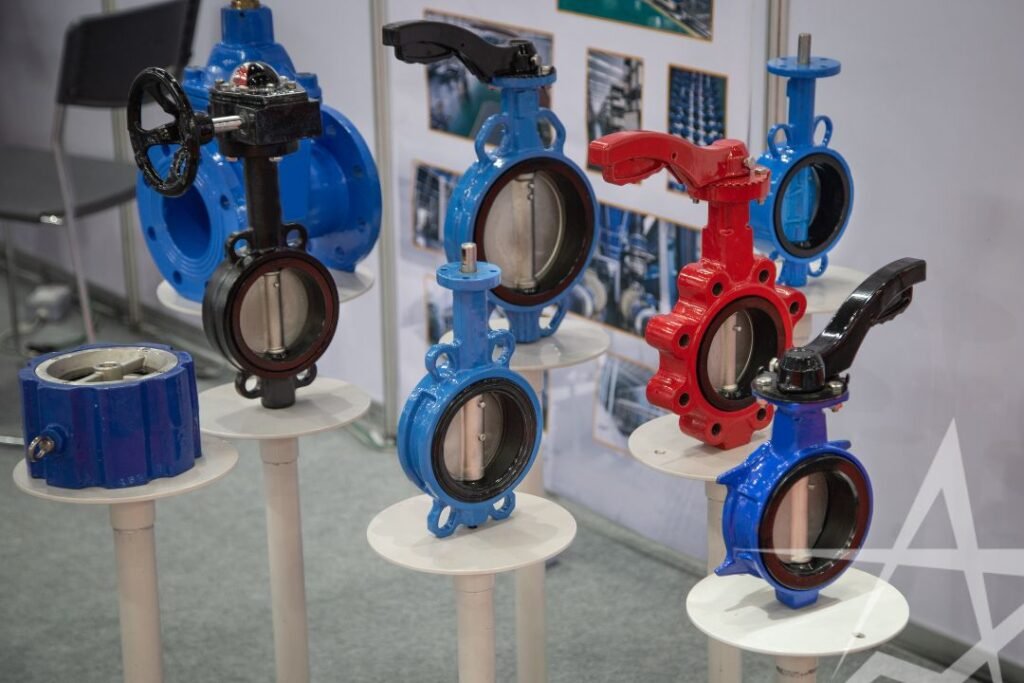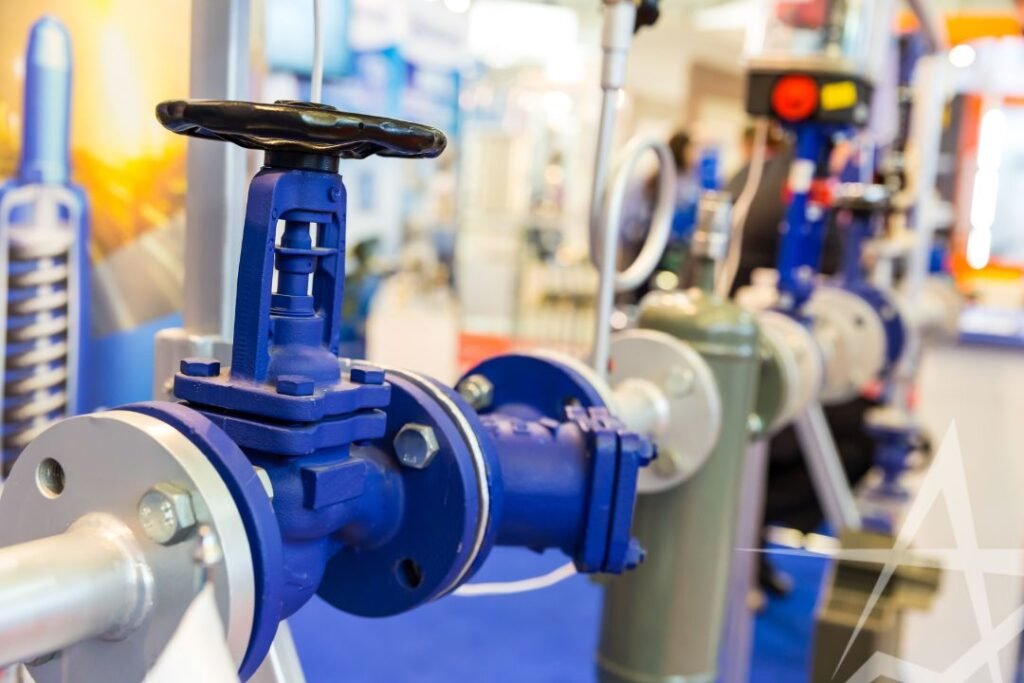Valves are essential components on marine vessels, ensuring the safe, efficient, and reliable control of fluids and gases throughout various systems. They regulate flow, maintain pressure, and prevent backflow in critical applications such as fuel management, cooling, bilge systems, and cargo handling. Below is an overview of the most common valve types used on vessels, along with a brief explanation of how each one works and its primary function.


1. Ball Valves
How They Work:
Ball valves use a spherical ball with a central bore. When the ball rotates (usually 90°), the bore aligns with the pipe, allowing flow; rotating it again cuts off the flow.
Primary Function:
- Quick and reliable shut-off
- Commonly used in fuel, water, and hydraulic systems due to their durability and ease of operation
2. Butterfly Valves
How They Work:
A butterfly valve features a disc that rotates on a central axis. The disc acts like a shutter, controlling the flow of fluid through the valve.
Primary Function:
- Suitable for large-diameter pipelines
- Provides a compact and lightweight solution with minimal pressure drop, often used in cooling water and ballast systems
3. Gate Valves
How They Work:
Gate valves operate by lifting a wedge-shaped gate from its seat to allow flow. When closed, the gate seals tightly against the seat, preventing any leakage.
Primary Function:
- Designed for full flow or complete shut-off
- Ideal for applications where minimal pressure drop is desired, such as in fuel and water distribution systems
4. Globe Valves
How They Work:
Globe valves have a movable plug (or disc) that can be adjusted to vary the flow. The plug moves perpendicular to the flow stream, allowing for precise throttling.
Primary Function:
- Offers excellent control over flow rates
- Commonly used in applications where flow regulation is critical, such as cooling systems and chemical dosing
5. Check Valves
How They Work:
Check valves are self-acting and allow fluid to flow in only one direction. They typically close automatically when reverse flow occurs, preventing backflow without the need for external control.
Primary Function:
- Protects systems by preventing reverse flow
- Widely used in pump discharge lines and bilge water systems to avoid backflow damage
6. Diaphragm Valves
How They Work:
Diaphragm valves utilize a flexible diaphragm that presses against a seat to restrict flow. When the diaphragm is lifted, the flow is allowed to pass.
Primary Function:
- Suitable for handling corrosive fluids and slurries
- Minimizes leakage and contamination, making them ideal for process and sanitary applications on board
7. Needle Valves
How They Work:
Needle valves feature a slender, tapered point (needle) that precisely regulates flow through a small orifice. The needle’s position can be finely adjusted to control the flow rate.
Primary Function:
- Provides fine control overflow
- Used in calibration and systems requiring precise dosing or metering
8. Pressure Relief Valves
How They Work:
Pressure relief valves automatically open to release excess pressure when it exceeds a preset level, thereby protecting the system from over-pressurization.
Primary Function:
- Enhances safety by preventing system failures
- Common in engine rooms, fuel systems, and other high-pressure applications
9. Solenoid Valves
How They Work:
Solenoid valves are electrically actuated. A solenoid coil opens or closes the valve in response to an electrical signal, allowing for automated control of fluid flow.
Primary Function:
- Facilitates remote or automated operation
- Widely used in modern vessels for systems like fuel injection, water supply, and process control
Valves play a critical role in ensuring that vessel systems operate safely and efficiently. From simple shut-off mechanisms like ball and gate valves to more sophisticated automated controls such as solenoid valves, each type is tailored to meet specific operational needs. Understanding the different valve types and their functions can aid in better maintenance, troubleshooting, and optimization of marine vessel systems.
Source:
[1] Cadet, M. (2023, November 25). All valve types at ships explained. https://marinecadet.com/valve-types-at-ships/
[2] Types of valves used onboard ships. https://marineengineering.softecks.in/2541/




